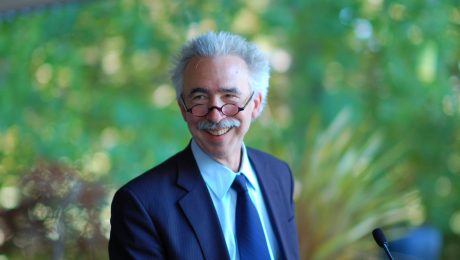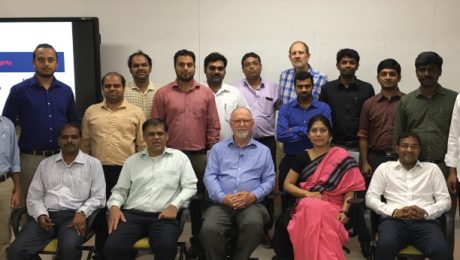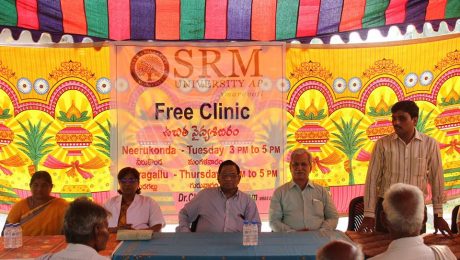SRM University, Andhra Pradesh announces new courses with MIT and UC Berkeley
July 15, 2017, Andhra Pradesh
In pursuit of developing the culture of excellence, SRM University, Andhra Pradesh has forged collaborations with the world’s best universities, MIT and UC Berkeley College of Engineering, U.S., launching new program with design, innovation, and entrepreneurship focus for the first time in India.
SRM is working with MIT, U.S. (Massachusetts Institute of Technology) for the design and development of their curriculum through the use of MITx courses. These courses will incorporate the concepts of hybrid learning by utilizing both traditional and technologically enabled teaching methods.
“SRM is embracing a contemporary method of learning for the digital world, not before seen in India. We are working with international universities to develop a progressive curriculum. We will emphasize application oriented learning via projects and lab courses rather than monologues that are the typical feature of our classrooms”, says Dr. P Sathyanarayanan, President of SRM University, Andhra Pradesh. The faculty recruitment has followed a similar strategy with over 90% of the faculty having international academic exposure and all faculty members having PhDs from foreign universities, IITs or IISc. Around 30 faculty members have been appointed across different disciplines and over 20% of the faculty recruited are foreign nationals.
SRM has also partnered with UC Berkley College of Engineering, California, U.S., to enable bi-directional information exchange in the areas of engineering education. SRM will also be a global partner of the Jacob’s Institute for Design engineering and the Sutardja Centre for Entrepreneurship and Technology (SCET). This partnership would establish centers of design, innovation and entrepreneurship at SRM, which would embrace the study and practice of “technology-centric” innovation bringing together technical depth, design methodology, and a focus on societal impact. SRM students and faculty will be provided the opportunity to travel to UC Berkeley to imbibe these ideas. Every year, 20 undergraduate students will be given the opportunity to go to UC Berkeley for a semester to study engineering at Berkeley with a defined set of concurrent enrollment and bootcamp courses.
“We aim to bring a confluence of international ideas, technological innovation, and social impact, creating an ecosystem of meaningful creation originating at Amaravati and impacting the entire state, nation, and the world.”, says Dr. Sandip Tiwari, Cornell University, U.S., and newly appointed Vice Chancellor of SRM University, Andhra Pradesh.
The university will also establish centres of Excellence in Renewable energy, Satellite technology, Internet of Things (IoTs), Blue Economy, Artificial Intelligence (AI) & Machine Learning, Rolls Royce – SRM Corporate laboratory, Jal – Janak Rail energy, and CRISPR for pushing the frontiers of modern technology. “Semester abroad programs and company internships across the world would also be present to create innovators and global leaders.” says Dr. Narayan Rao, Pro – Vice Chancellor of SRM AP.
- Published in News
Dr.Nicholas Dirks appointed as the Honorary Pro Chancellor of SRM University, AP – Amaravati
Dr. Nicholas Dirks, Emeritus Chancellor of University of California, Berkeley has been appointed as the Honorary Pro Chancellor of SRM University, Andhra Pradesh.
He was earlier named the 10th chancellor of the University of California, Berkeley in 2012, and served in that role between June 1, 2013 and July 1, 2017. An internationally renowned historian and anthropologist, he is a leader in higher education and well-known for his commitment to, and advocacy for accessible, high-quality undergraduate education, to the globalization of the university, and to innovation and collaboration across the disciplines and between universities and outside partners.
- Published in News
Faculty Workshop by Nanyang Technological University (NTU), Singapore
September 11-13 2017
Venue: Class Room No: 4, Academic Block, SRM AP, Amaravati
By: Dr. Peter Looker, Head – Teaching, Learning and Pedagogy Division, Nanyang Technological University, Singapore
A workshop was conducted for faculty of SRM Andhra Pradesh, by Nanyang Technological University (NTU) Singapore in order to help them develop practical skills and to increase student learning, teaching skills, assessment, course and curriculum design as well as communication. The lectures were delivered by Dr. Peter Looker from 11-13th September 2017 at SRM-Andhra Pradesh. The current pedagogical thinking based on student learning in higher education was presented to the faculty in six three hour modules. The participating faculty were trained in collaborative learning, technology-enabled learning and the flipped classroom.
Also discussed were wide variety of teaching approaches based on reflective and analytical methods. Various contemporary theories of learning and teaching strategies appropriate to a blended and student-centred orientation were debated and discussed. The faculty were encouraged to design courses with explicit outcomes aligned to assess learning activities. Effective student communication skills (both face to face and online) were studied. Further, assessment strategies based on student learning were presented to the faculty and outlined in detail. Last but not least, the prevailing strategies to increase student’s progress and performance were examined.
- Published in News
Health Camp at Neerukonda Village by SRM University AP-Amaravati
Date: December, 5, 2017
On December 5th, 2017, SRM University AP-Amravati in collaboration with Sarpanch Ch. Samarajyam, Mandal Parishad Territorial Constituency (MPTC) Vasantha Kumari and other Gram Panchayat representatives inaugurated the Free Medical Clinic Service in Neerukonda Village, Mangalgiri Mandal. The Pro Vice Chancellor of SRM Univiersity AP-Amravati, Prof. Narayana Rao in his address said that helping the nearby villages and its people is one the main components of University’s mission. Also, the University Chief Medical Officer Dr. Ch. Laxmirajyam served in the camp and promised free medication to the patients. It was informed that in case of critical diseases, the villagers will get treatment in the NRI Hospital, Mangalgiri. Such medical clinics will be organized every Tuesday from 3:00 p.m. to 5:00 p.m. In addition, SRM also initiated a cleanliness program in an attempt to clean the neighboring villages of the University.
Dr. Narayana Rao – Pro Vice Chancellor, Dr. D Gunasekaran – Registrar, Deputy Registrar, Faculty & Staff Members of SRM University along with B. Suba Reddy and other Panchayat Representatives provided their help and support to make this initiative a success.
- Published in News




